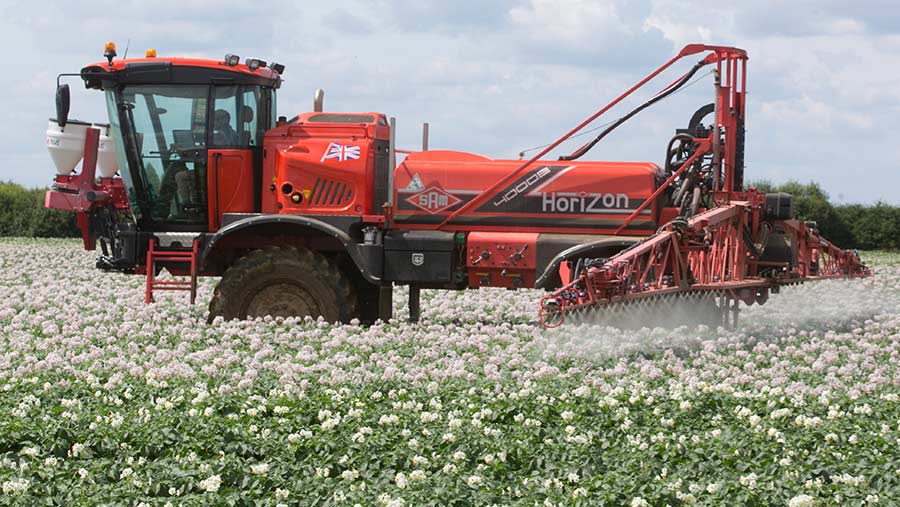Retailer price squeeze risks loss of potato and veg production
 © Tim Scrivener
© Tim Scrivener Retail pricing strategies for potatoes and vegetables are putting the acreage in danger, warn growers and co-ops.
Many growers look like breaking even at best on the 2022 crop at contract prices agreed before the Russia-Ukraine war, while free-buy old-crop packing material is worth just £60-£100/t in many areas.
Prior to that, Brexit and the Covid-19 pandemic had hammered the potato sector.
Plans for 2023 are being made, including decisions on cropping licences. With November 2023 wheat futures at £240/t and high malting barley premiums, many growers are expected to switch acreage into cereals or cut back their potato commitment.
See also: Farm collaborations – examples and tips for success
“It’s hard work at the moment – no one is willing to pay more,” said Charlie Stevens, trading and logistics manager for grower group East Suffolk Produce, which markets 50,000-60,000t of ware for its members.
“Fuel prices rose just as we were starting to plant and while costs of production depend on yield, some will be breaking even at best,” he said.
Packers are behind on contracted tonnages of old-crop, increasing storage risks and costs
Risk reduction
“As a group we will be cutting back significantly [on acreage in 2023],” said Mr Stevens. “People need to derisk.”
Essex grower Peter Cooper said: “Growers face ongoing rises in costs, with no sign of any increase in potato prices.
“People with potatoes still in store have costs in excess of £80/t to cover the storage. The crunch will come in September/October, when people decide whether to plant cereals or roots. With wheat at £250/t and malting barley at £320/t, that has to be weighed up against the risk of growing potatoes.
“Processors seem to be more understanding of the situation – some have made a small increase to help with higher growing costs – but packers are holding back.”
Growing cost increases
Mike Shapland, farms manager at James Foskett Farms in Suffolk, has 370ha of potatoes and 135ha of onions in the ground, as well as 160ha of organic vegetables.
“Price negotiations on potatoes generally take place between November and February, so for the 2022 crop those were before the war, and we’ve seen really significant increases in fuel costs since then.”
He said hefty growing cost increases were making decisions about the 2023 crop difficult. “I’m trying to finalise 2023 commitments to [rented] land and it looks as if I’ll be signing up to lose money in some situations.
“It’s frustrating that a small increase in the retail price – say 10p on a 1kg bag of potatoes or onions – would give £100/t back to the grower, which can be a 50% increase in returns.”
While crispers and chippers had been more forthcoming, the packing sector had been resistant to price rises, he said.
“Onion prices have been too low for the past three to four years,” said Mr Shapland. Those in the ground have still not been priced and he estimates losses of £50,000-£100,000 on last year’s £1.2m crop.
“Since the 2022 crop was planted, we have seen a 20% rise in costs. We’re negotiating quite hard on the 2022 price, but I don’t think we’ll see more than a 15% rise.”
The business also supplies box schemes and smaller customers, where there has been more understanding on the need for price rises in most cases, he said.
